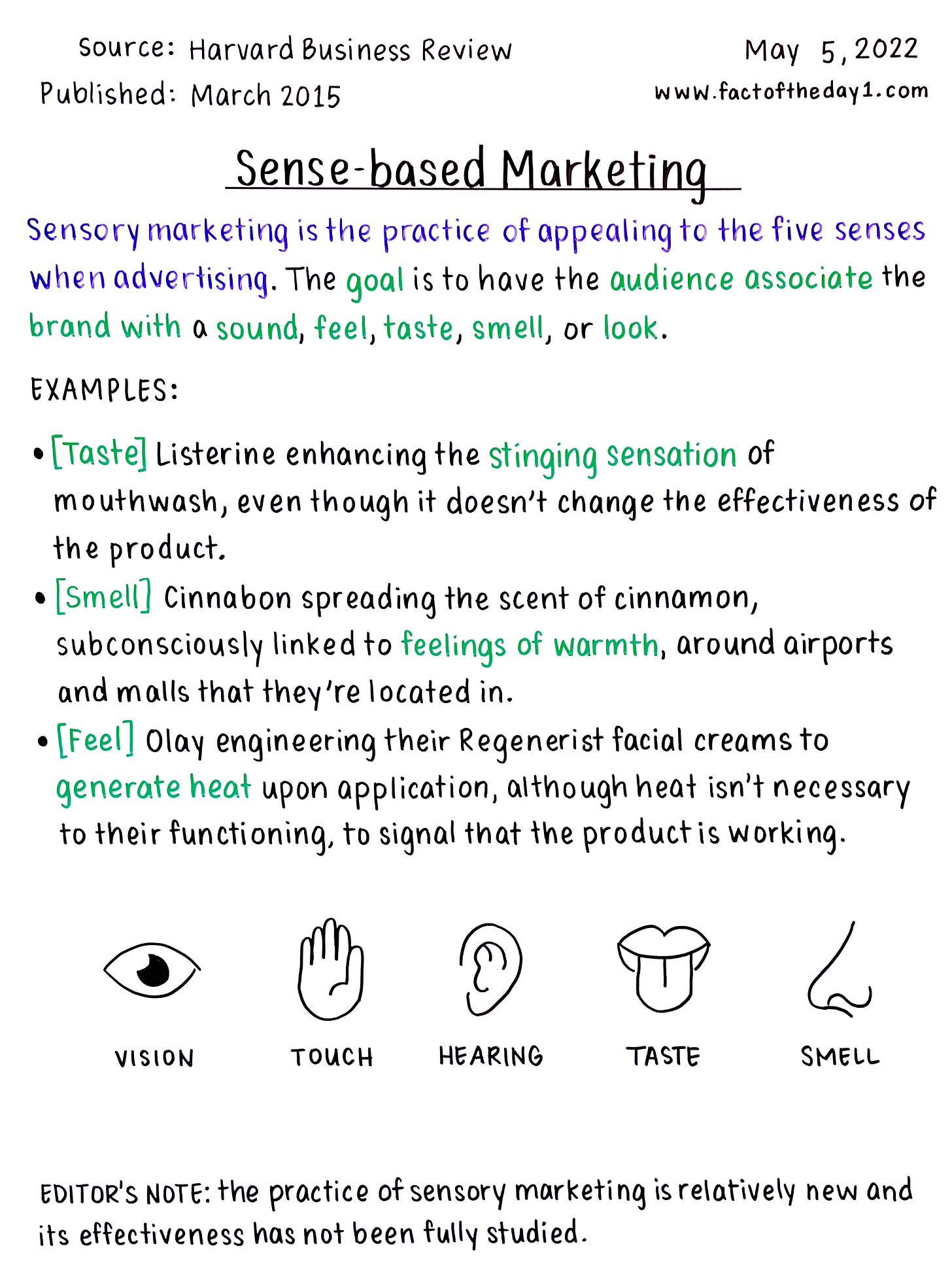May 5: Sense-based Marketing
The goal is to have the audience associate the brand with a sound, feel, taste, smell, or look.
Source: Harvard Business Review
Published: March 2015
Sense-based Marketing
Sensory marketing is the practice of appealing to the five senses when advertising. The goal is to have the audience associate the brand with a sound, feel, taste, smell, or look.
Examples:
[Taste] Listerine enhancing the stinging sensation of mouthwash, even though it doesn’t change the effectiveness of the product.
[Smell] Cinnabon spreading the scent of cinnamon, subconsciously linked to feelings of warmth, around airports and malls that they’re located in.
[Feel] Olay engineering their Regenerist facial creams to generate heat upon application, although heat isn’t necessary to their functioning, to signal that the product is working.
Editor’s note: the practice of sensory marketing is relatively new and its effectiveness has not been fully studied.
Are you hiring tech talent? Email me to feature your job in this newsletter.


